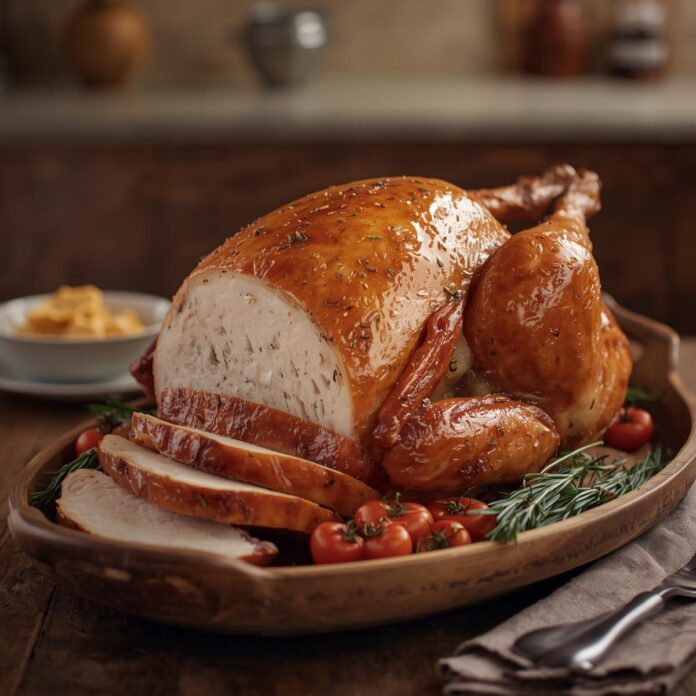There are few culinary treats as universally comforting as a warm cinnamon sugar donut. Simple yet deeply satisfying, it is a classic pastry that transcends trends, seasons, and generations. Its appeal lies not in extravagance but in the perfect balance of texture, aroma, and flavor: a tender crumb enclosed by a delicate golden crust, still warm enough for the butterfat notes of the dough to mingle with the sparkling crunch of cinnamon sugar. When fresh, a cinnamon sugar donut offers an experience that is best described as immediate happiness, the kind that begins with the first scent of spice in the air and deepens with every bite.

The popularity of the cinnamon sugar donut spans cultures and continents, though its exact origins are intertwined with the broader history of fried dough. Nearly every society on earth has developed its own version of dough fried in hot fat: from ancient Roman scriblita to Dutch oliebollen, from Spanish churros to Middle Eastern zalabia, fried dough has long been a way to transform humble ingredients into something irresistible. The cinnamon sugar donut as we know it today is an evolution of these traditions, influenced by European baking practices, American ingenuity, and the widespread love for warm spices that evoke comfort and familiarity.
What makes the cinnamon sugar donut especially beloved is its accessibility. Despite its luxurious taste, the donut rests on modest building blocks: flour, sugar, butter, eggs, yeast or chemical leavening, and spices that are found in almost any home kitchen. Yet the transformation of these ingredients into something light, fragrant, and cloud-soft requires an understanding of technique. Achieving the ideal donut is not merely about combining ingredients in the correct order; it demands attention to dough consistency, patience in rising or resting times, precision in frying temperature, and careful handling to preserve tenderness. The process is deliberate, but the reward is exceptional.
This recipe is designed to guide both experienced bakers and enthusiastic beginners through every stage of crafting cinnamon sugar donuts from scratch. Instead of rushing through the steps, it explores the reasons behind each choice—why certain flours yield lighter crumbs, how moisture and fat content affect the final texture, and what temperature ensures perfect frying without excess oil absorption. By slowing down and understanding the principles behind the recipe, any home cook can produce donuts with bakery-quality taste and texture.
Beyond technique, there is also a deeper connection to be found in donut making. Frying dough was once reserved for festivals and special occasions, and even today, the act feels celebratory. The sound of dough meeting hot oil, the rising fragrance of spice, and the warm coating of cinnamon sugar that clings to every surface create an atmosphere that draws people together. Making donuts at home invites participation—whether it is shaping the dough, tossing the fresh donuts in sugar, or simply gathering around to enjoy them while still warm.
Cinnamon sugar donuts in particular evoke comfort that borders on nostalgic. They call to mind fall fairs, childhood weekend breakfasts, roadside farm stands, and the comforting kitchens of grandparents who believed that cinnamon was as essential as warmth itself. Yet they remain timeless enough to fit modern tastes as well, easily adapted to dietary preferences, filled for indulgence, or crafted into bite-sized treats for gatherings. Despite their simplicity, they possess a versatility that encourages creativity.
Detailed Instructions for Crafting Cinnamon Sugar Donuts
1. Understanding the Core Ingredients
Before mixing the dough, it is important to understand the purpose of each ingredient. Donut dough relies on a delicate balance of structure, tenderness, moisture, and flavor. Knowing why each ingredient matters will make you a better baker and help you troubleshoot any issues.
1.1 Flour and Gluten Formation
Flour provides the framework for the donut. Most traditional donuts use all-purpose flour, which contains enough protein to create a soft structure without becoming tough.
Using bread flour can create chewier donuts, while pastry flour can make them too fragile.
The interaction between water and proteins in the flour forms gluten, which gives elasticity and helps the donuts rise. The key is not to overmix; too much gluten leads to dense donuts.
1.2 Yeast or Chemical Leavening
Cinnamon sugar donuts can be made with yeast or baking powder.
This recipe will focus on yeast-raised donuts because they create superior texture: airy, fluffy, and slightly elastic.
-
Instant yeast mixes directly into the flour.
-
Active dry yeast must be dissolved in warm liquid first.
Yeast feeds on sugars, producing carbon dioxide bubbles that make the dough rise.
1.3 Sugar
Sugar sweetens the dough but also tenderizes it. It interferes with gluten development, keeping the texture soft, and helps with browning during frying.
Too much sugar can make the dough sticky or cause it to brown prematurely in the oil.
1.4 Milk and Moisture
Milk is preferred over water because it adds richness, promotes browning through lactose sugars, and gives the donut a tender crumb.
Whole milk yields the best texture, but lower-fat milk can be used if necessary.
1.5 Eggs
Eggs enrich the dough, adding moisture, fat, and natural emulsifiers. They help bind ingredients and contribute to softness.
Too many eggs will make the dough heavy; the right balance creates a pillowy interior.
1.6 Butter or Fat
Butter adds flavor and tenderness. Fat coats some of the flour particles and slows gluten development, ensuring a soft, delicate donut structure.
The butter should be softened—not melted—to blend evenly.
1.7 Salt
Salt enhances flavor but also strengthens gluten strands, helping the dough achieve structure. Without salt, donuts taste flat and bland.
2. Preparing and Activating the Yeast
For yeast-raised donuts, proper yeast activation is essential.
2.1 Proofing Yeast (If Using Active Dry)
-
Warm the milk until it reaches 105–110°F (40–43°C).
-
Add a teaspoon of sugar.
-
Sprinkle the yeast over the surface but do not stir immediately.
-
Allow it to sit for 5 minutes, then gently stir.
-
After 10 minutes, the mixture should be foamy and fragrant.
If there is no foam, the yeast may be expired or the liquid was too hot or cold.
2.2 Using Instant Yeast
Instant yeast requires no proofing. It can be mixed directly with the dry ingredients.
However, using warm milk will still help the dough rise faster.
3. Mixing the Dough
3.1 Combining Dry Ingredients
In a large bowl, whisk together:
-
Flour
-
Sugar
-
Salt
-
Optional spices like nutmeg (traditional in donuts)
Nutmeg complements cinnamon beautifully and adds depth to the dough.
3.2 Incorporating Wet Ingredients
Create a well in the center of the dry ingredients. Add:
-
Warm milk (with dissolved yeast if using active dry)
-
Eggs
-
Softened butter
Mix gently until a shaggy dough forms. Do not add all the flour at once; humidity, brand differences, and fat content can change the dough’s needs.
3.3 Kneading the Dough
You may knead by hand or with a stand mixer fitted with a dough hook.
Desired Dough Texture
-
Soft
-
Slightly tacky
-
Smooth and elastic
-
Not overly sticky
If the dough clings excessively, add flour one tablespoon at a time. If it becomes too dry, add a small splash of milk.
3.4 How Long to Knead
-
By hand: 8–10 minutes
-
With a mixer: 5–6 minutes
Kneading develops gluten structure, essential for the donut’s rise.
4. First Rise (Bulk Fermentation)
Once kneaded, the dough needs time to rest and rise. This stage develops flavor and structure.
4.1 Ideal Conditions
Place the dough in a lightly oiled bowl. Cover with:
-
Plastic wrap
-
Or a clean kitchen towel
Allow it to rise in a warm, draft-free environment.
4.2 Timing
Depending on room temperature, the rise will take:
-
1 to 2 hours
The dough should double in size.
Too cool a room will slow the rise significantly. Too warm can weaken the dough structure.
4.3 Slow Fermentation Option
For deeper flavor, refrigerate the dough for:
-
12 to 18 hours
Cold rising improves texture and makes the dough easier to handle. Many bakeries use this method for superior results.
5. Rolling Out the Dough
5.1 Preparing the Work Surface
Lightly flour the counter to prevent sticking.
Place the risen dough and gently deflate it with your hands.
5.2 Thickness Matters
Roll the dough to ½ inch (1.25 cm) thickness.
Thicker dough yields tall, airy donuts. Thinner dough creates crispier donuts with less interior fluff.
5.3 Cutting the Donuts
Using a donut cutter (or two round cutters), cut out rings.
Avoid twisting the cutter, as it seals the edges and prevents proper rising.
Tip
Gather leftover dough, knead gently once, and roll again.
The second batch will be slightly denser but still delicious.
6. Second Rise (Proofing the Donuts)
This stage determines how light and fluffy the donuts will be.
6.1 Transferring the Cut Donuts
Place them on:
-
Parchment squares
-
Lightly floured trays
Spacing allows them to expand without sticking.
6.2 Proofing Conditions
Cover lightly and let the donuts rise for 30–45 minutes.
6.3 How to Know They’re Ready
-
They look puffy and slightly wobbly when nudged.
-
Press lightly with a fingertip: the indentation should slowly bounce back.
If it springs back too quickly, the dough needs more time.
If it collapses or wrinkles, the dough is overproofed.
7. Preparing to Fry
Frying requires attention and control.
7.1 Choosing the Oil
The best oils for donut frying have:
-
High smoke points
-
Neutral flavor
Recommended oils:
-
Canola
-
Peanut
-
Vegetable oil
-
Sunflower
Avoid olive oil or butter.
7.2 Heating the Oil
Heat the oil in a heavy pot or deep fryer to:
-
350°F (175°C)
Temperatures lower than 340°F cause greasy donuts.
Temperatures above 365°F cause burnt exteriors and raw interiors.
Use a thermometer; visual guessing is unreliable.
7.3 Frying Setup
Have ready:
-
A slotted metal spoon
-
A wire rack lined with paper towels
-
The cinnamon sugar mixture in a wide bowl
8. Frying the Donuts
8.1 Frying Process
Carefully lower the donuts into the oil, one at a time. Do not overcrowd the pot.
Fry each side for:
-
45 to 60 seconds
The donuts should be golden brown, not dark brown.
8.2 Maintaining Temperature
Oil temperature drops when donuts are added.
Adjust the heat as needed to remain close to 350°F.
8.3 Draining
Transfer fried donuts to the rack.
Let them drain for 20–30 seconds before coating.
9. Cinnamon Sugar Coating
9.1 Creating the Mixture
Combine:
-
Granulated sugar
-
Ground cinnamon
Common ratio:
-
1 cup sugar to 1–2 tablespoons cinnamon, depending on desired intensity.
9.2 Coating Technique
While the donuts are still warm but not scorching:
-
Toss them gently in the mixture
-
Ensure full, even coverage
Warm donuts hold the sugar better, forming a crisp outer layer.
9.3 Adjusting Texture and Flavor
For deeper flavor:
-
Add a pinch of nutmeg
-
Replace part of the sugar with fine brown sugar
-
Add a touch of vanilla sugar
10. Final Texture and Serving Notes
A perfect cinnamon sugar donut should have:
-
A crisp, light exterior
-
A soft, almost cloud-like interior
-
Even coloring
-
Balanced sweetness
-
A warm fragrance of cinnamon
Serve immediately for best quality, though they remain pleasant for several hours.
Cinnamon Sugar Donut
There are few culinary treats as universally comforting as a warm cinnamon sugar donut. Simple yet deeply satisfying, it is a classic pastry that transcends trends, seasons, and generations. Its appeal lies not in extravagance but in the perfect balance of texture, aroma, and flavor: a tender crumb enclosed by a delicate golden crust, still warm enough for the butterfat notes of the dough to mingle with the sparkling crunch of cinnamon sugar. When fresh, a cinnamon sugar donut offers an experience that is best described as immediate happiness, the kind that begins with the first scent of spice in the air and deepens with every bite.
Ingredients
- Dry Ingredients:
- 2 cups all-purpose flour
- 1 cup granulated sugar
- 2 tsp baking powder
- 1 tsp ground cinnamon
- ½ tsp nutmeg
- ½ tsp salt
- Wet Ingredients:
- 2 large eggs
- ¾ cup whole milk (or buttermilk for richer donuts)
- ¼ cup melted butter (or oil)
- 2 tsp vanilla extract
- Cinnamon-Sugar Coating:
- ½ cup granulated sugar
- 1½–2 tsp ground cinnamon
- 4 tbsp melted butter (for brushing)
Instructions
1. Prep
- Preheat oven to 350°F (175°C).
- Lightly grease a donut pan with butter or nonstick spray.
2. Make the Batter
- In a large bowl, whisk together flour, sugar, baking powder, cinnamon, nutmeg, and salt.
- In a separate bowl, whisk eggs, milk, melted butter, and vanilla.
- Pour wet mixture into dry ingredients and stir until just combined—do not overmix.
3. Fill the Pan
- Spoon or pipe batter into donut wells, filling each about ¾ full.
4. Bake
- Bake 10–11 minutes, or until donuts spring back when lightly pressed.
- Let cool in pan 3–5 minutes, then transfer to a rack.
5. Coat in Cinnamon Sugar
- Mix cinnamon and sugar in a shallow bowl.
- Brush each warm donut lightly with melted butter.
- Toss or dip in cinnamon sugar until fully coated.
Notes
- Don’t overbake: Cake donuts dry out quickly. Remove as soon as they set.
- For fluffier donuts: Use buttermilk and add an extra ¼ tsp baking powder.
- Variation: Add 1–2 tbsp cocoa powder for chocolate cinnamon donuts.
- Frying version: I can give you a fried donut version if you prefer classic yeast donuts.



